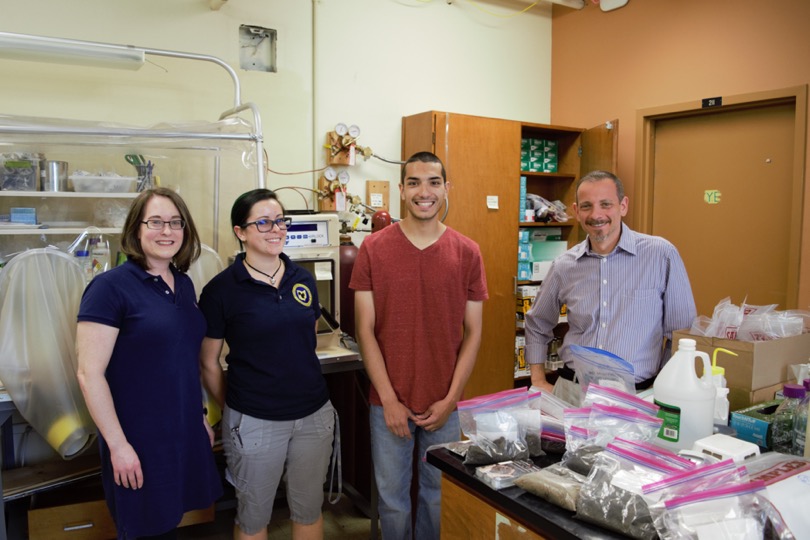2019 Seed Grant Recipients
Investigators: Dr. Bridget Mulvey (College of Education, Health, and Human Services) and Dr. David Singer (College of Arts and Sciences)

Future workforce shortages are expected in STEM (science, technology, engineering, and mathematics), thus there is a critical need for relevant and meaningful STEM teaching and learning in middle school and high school (PCAST, 2010). These experiences are essential to develop students’ skills as well as knowledge of and interest in STEM careers. In addition, the experiences are needed to develop an informed public that can make decisions related to and informed by STEM knowledge and perspectives. Despite this need, most STEM educational experiences tend to recreate what STEM professionals have already learned.

The current project leverages a common problem in cities, lead (Pb) in soil, as the focus of students’ authentic STEM research in their own community. Pb contamination has been highlighted in the news (e.g., The New York Times, Sept. 11, 2018; Nov. 1, 2018). Pb is a highly toxic metal commonly present in U.S. urban environments, making research on Pb timely and relevant for student and scientist alike. Authentic science/STEM experiences can improve students’ STEM identity development (Chapman & Feldman, 2017). Students will learn about soil, Pb, and contamination as they collect soil samples, analyze the samples, and interpret results using geospatial technology such as maps, Google Maps, and Google Earth. Geospatial technologies represent important ways for scientists and students to visualize, collect, observe and analyze science data. They can support student investigations involving data at various scales and in layers to promote substantive spatial thinking and analysis of patterns (Mohan et al., 2014). Students’ use of these tools similar to the ways of scientists can support science inquiry involving real world data, more authentic science, and prepare students for spatial thinking for STEM careers. There is a substantial need for earlier and better training to enable students to engage in authentic STEM practices.

This project uses STEM educational experiences to advance knowledge in STEM education and geological science. Project Local Environment-based Authentic Discovery Research and Outreach on Lead (LEAD) is focused jointly on curriculum and teacher professional development, key to improving K-12 instruction (Bodzin et al., 2013; 2016). Project LEAD will focus on training and research experiences for teachers and students in soil science research on Pb in learners’ own communities, research for which scientists do not yet know the answers. The project will collaborate closely with Akron Public Schools (APS), our school district partner that initiated the request for us to develop a curriculum to support students’ authentic research connected to the Akron community.

